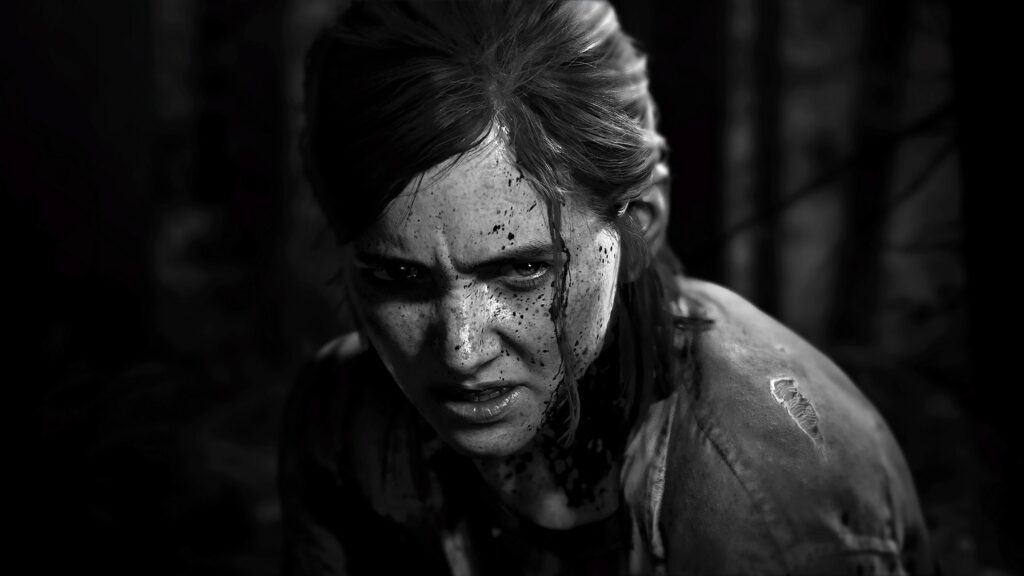
The Last Of Us was not just the swan song of the PlayStation 3, it was a watershed moment for the video game medium. There had been many narrative driven games before, but rarely had anyone attempted a story as nuanced with grounded performances.
Naughty Dog spared no expense when it came to its unparalleled presentation; aiming for visuals that pushed the third Sony console to its utter limit. Fueled by passionate creators with a vision; a post apocalyptic epic of one man’s journey to find himself and to survive.
Joel and Ellie’s journey proved to be harrowing and emotionally exhausting, which climaxed with an unforgettable ending that left an uneasy question looming. It wasn’t a perfect game, but the perfect ending made the player think. Of all the games ever made to get a sequel, The Last Of Us was the one that needed one the least.
Editor’s Note: Spoilers for The Last Of Us and The Last Of Us Part II from this point on.
The Last Of Us Part II
Developer: Naughty Dog
Publisher: Sony Interactive Entertainment
Platforms: PlayStation 4
Release Date: June 19, 2020
Players: 1
Price: $59.99
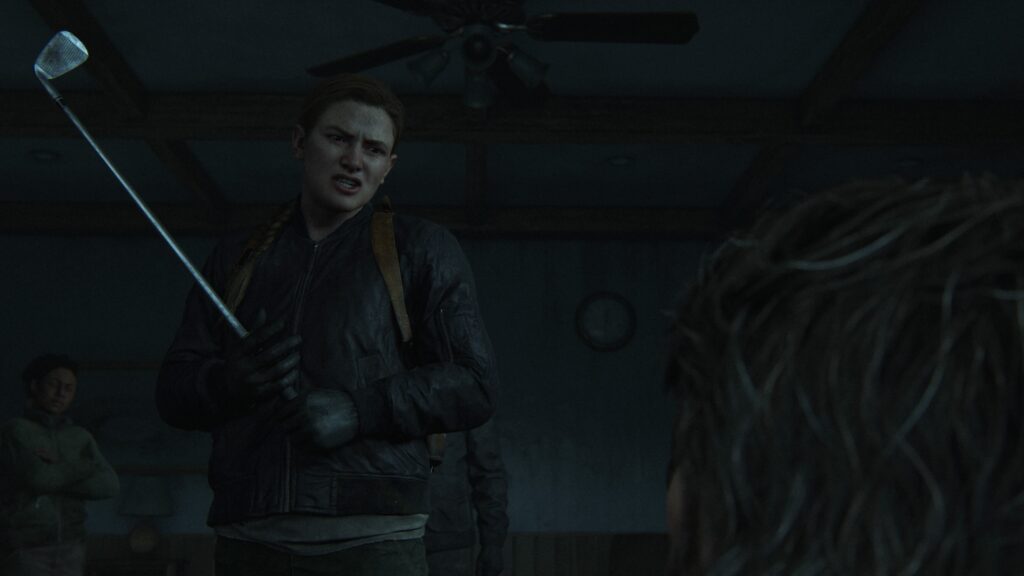
A fungal disease that functions like a zombie virus has spread, and has put humanity on the brink of extinction. Joel Miller was a single father who lost his daughter on the eve of the collapse of society. Stricken with grief and a cynical outlook on life he became a survivor in the post-apocalypse.
Like a less idealized Max Rockatansky, Joel had to live a life of kill or be killed. Sometimes smuggling, sometimes hunting people and most of the time ripping off other survivors; he learned to live again. Everything changed when he was assigned to Ellie’s case.
Ellie was a teenage girl during the course of The Last Of Us. She was raised in the post-apocalypse and was endowed with an immunity to the fungus. Joel and Ellie bonded during the journey to transport her to a hospital in Boston where she will participate in a procedure that might lead to a cure.
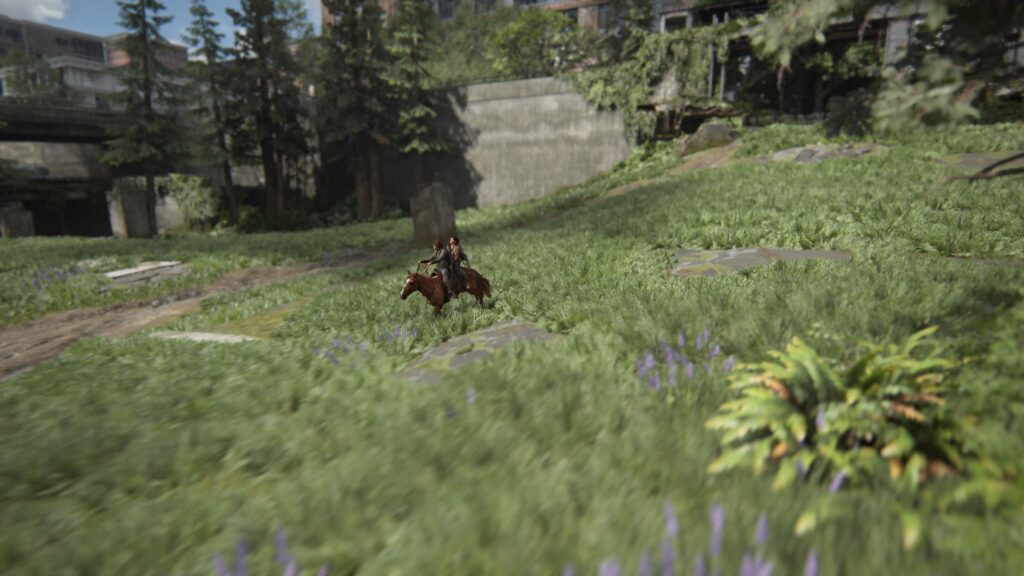
The Last Of Us was a long road of drama. Characters would be introduced and they would get developed, only for a climactic and shocking chain of events that would lead to their deaths. It was a setting where the world felt grounded and where anyone could die. The fragility of life made the stakes feel palpable.
The father-daughter dynamic was the emotional core of The Last Of Us. It held the experience together, since the gameplay was a very milquetoast third-person action game that was bare bones even for its time. The sequel does expand some of the action to a degree, but ultimately is as shallow as its predecessor.
When The Last Of Us Part II lets you play, it can prove to be satisfying because it does an excellent job at making you feel like a ruthless killing machine. There are many more threats at any given moment and the environment is much larger and vertical.
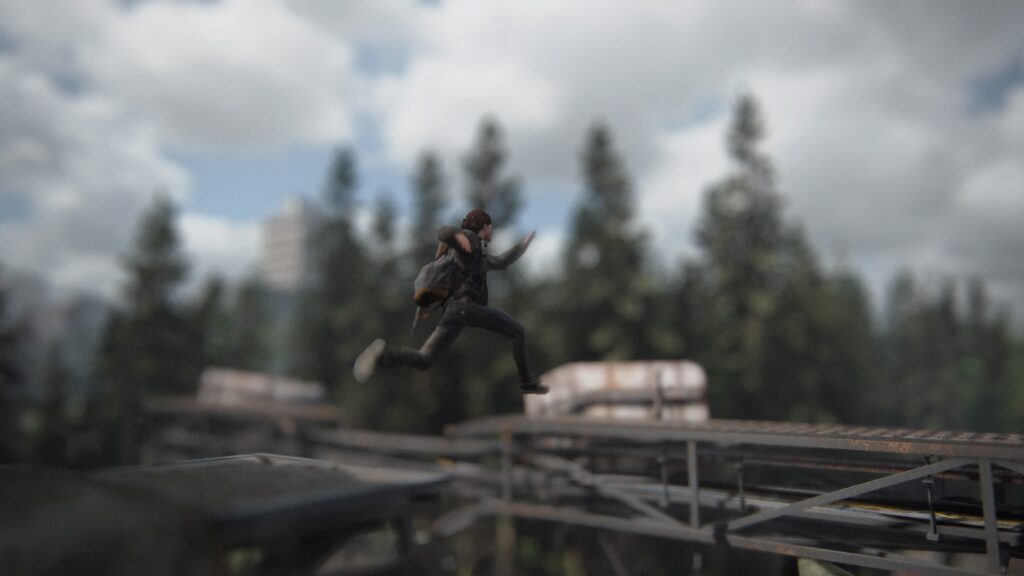
There are many tiresome story focused moments, typically slow paced sequences where actions are restricted to what the writer allows. Regardless who you are playing as, you learn to accept that control can be taken away at any moment to be shunted into a flashback.
These boring moments are strictly intended to add flavor and develop characters at the expense of pacing. If being forced to a casual strut and having to listen to characters you don’t like sounds appealing, then The Last Of Us Part II will please you.
The setting of The Last Of Us Part II is hostile and bleak. There was never going to be a happy ending for Joel, and it was a matter of time that somebody would ice him. The idea of Joel getting wiped out and Ellie going Death Wish on his killer is something that is not unbelievable in the world this game takes place in.
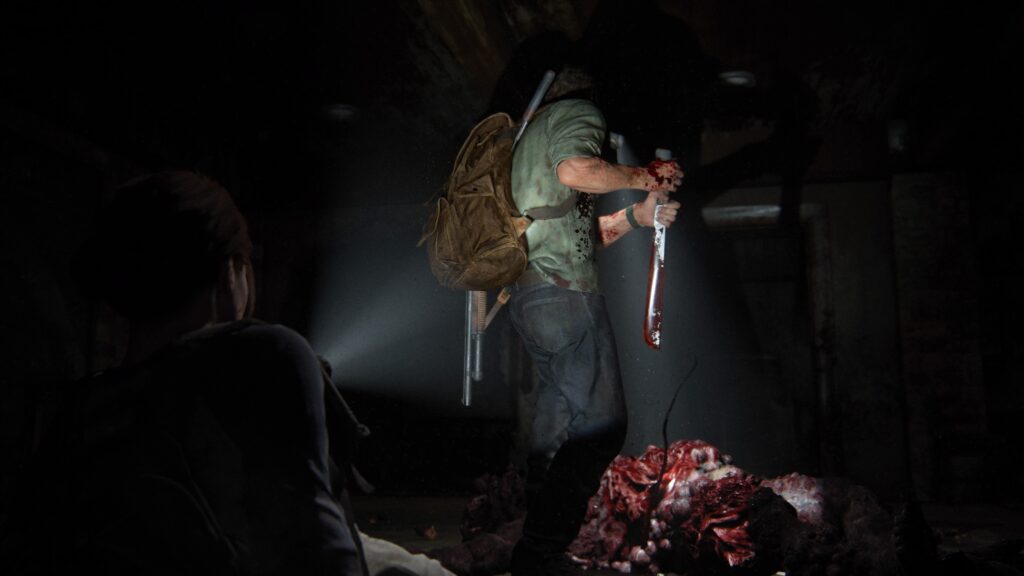
The plot of The Last Of Us Part II could have worked. The problem with it is how the story is told and written. There are glaring instances of the writer showing his hand and contriving certain things to happen. The gameplay will clash with the narrative and the themes, causing whiplash of dissonance.
One major thread is Ellie’s relationship with her pregnant girlfriend, Dina. As a couple they have no chemistry at all due to how similar their characters are, and have very hokey, love-dovey dialogue that is completely unnatural.
Real couples don’t talk to each other like this. It comes off like the writer has no experience with relationships or understanding of how people interact. Extensive scenes will play out with Ellie and Dina acting like they are in an embarrassing amateur student film for a pride month project.
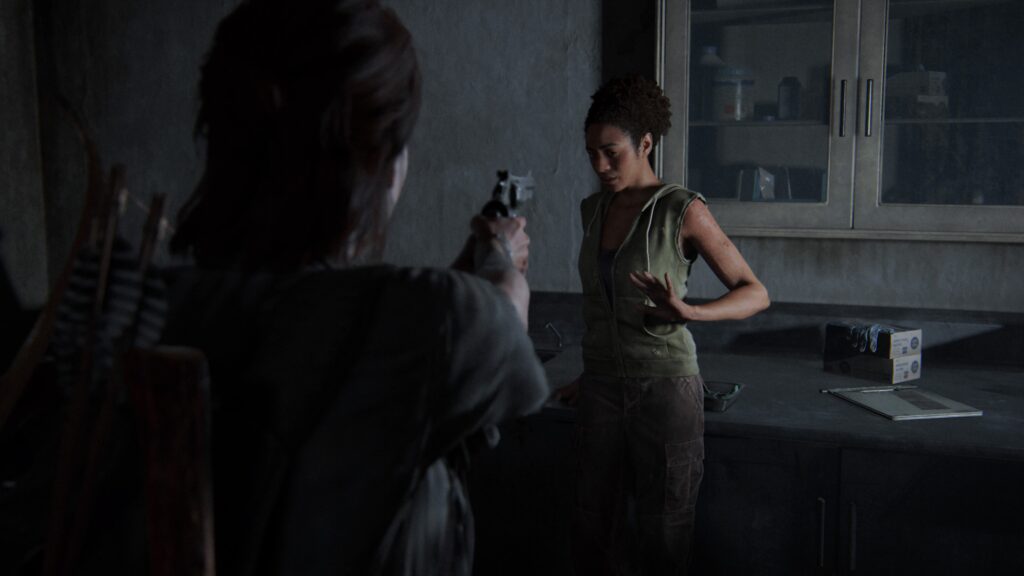
It becomes impossible to take any of the drama seriously when Ellie tortures an infected woman with a steel pipe in a cutscene, only for the story tries to make it seem like this is the only traumatic experience she has ever had. For hours, Ellie has done far worse to basic enemies who call out for help when they find their dead comrades.
Hilariously, Ellie will even growl obscenities at these poor devils as she shanks them right in their jugular. This goes on for the entire game. The absurd graphic violence clashes with the story so hard, you’d think you were playing Manhunt that got edited into scenes of the bad episodes of The Walking Dead.
The writer constantly waves his finger at the player for partaking in fearsome acts of violence, yet never giving the player any other choice. It becomes an unintentional hilarious farce when you get to play with a dog that Ellie will savagely mutilate in a forced quick-time-event an hour prior.
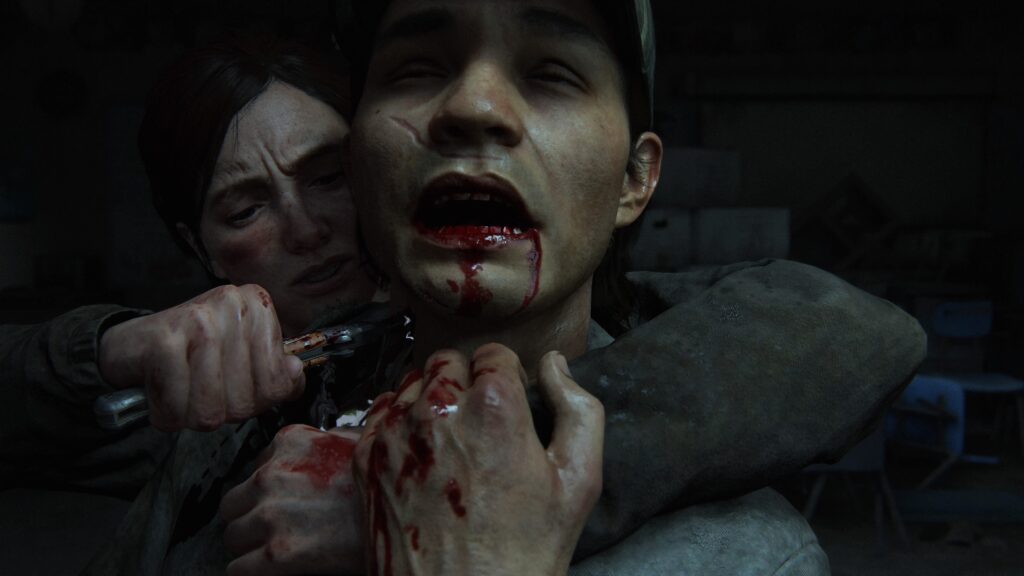
The narrative shifts perspectives between Ellie and Abby. This is meant re-contextualize both characters in an attempt to make a very heavy handed statement about violence and revenge. This over-arching theme comes at the expense of gameplay, leading to several head-scratching moments.
There is a boss battle against Ellie as Abby, where anyone who wants Ellie’s quest for vengeance to be fulfilled need only to put the controller down. Ellie will blast Abby to shreds in this sequence but when playing as her will frustratingly bail at the end. The Last Of Us Part II gives no agency for anything that happens despite there being ample opportunity.
The entire game is really long- too long for a simple third-person action game. There was potential for a shorter experience with branching story where player actions could have made things play out differently.
There so many unskippable, tedious walking sim sequences that desperately try to make unlikeable characters likeable. It never works, because the writer’s hand is far too obvious.
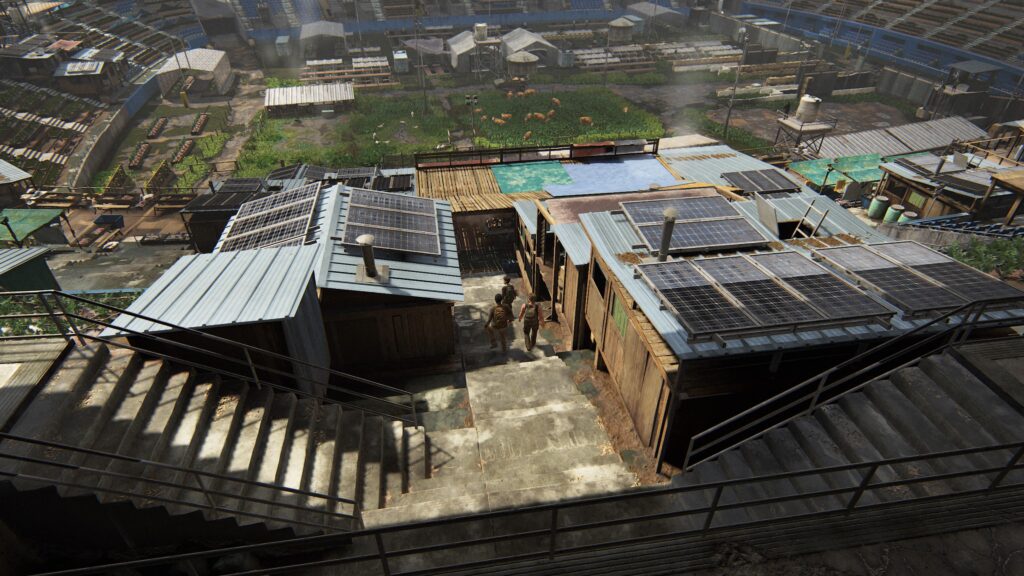
Some characters are written too quirky to be taken seriously, and everyone is rotten with snark. It does not help that Abby and the gang get an absurdly dark introduction, and it isn’t until about ten hours the narrative shifts to her perspective.
By that point, it is too late. It is commendable for a huge AAA production to make such an insane risk, but in this case it was just grossly miscalculated. No matter how much good Abby tries to do, or how much guilt she feels after murdering Joel and assaulting Ellie with her crew, she never earns sympathy.
Abby’s character is poorly written, badly directed, and miscast. For some reason, the director hired a woman in her 40s to perform a 20 year-year-old female. Her living conditions suggest she has been quite comfortable considering its the post-apocalypse, and the only conclusion why she has the personality of a blood-thirsty thug is that she enjoys killing.
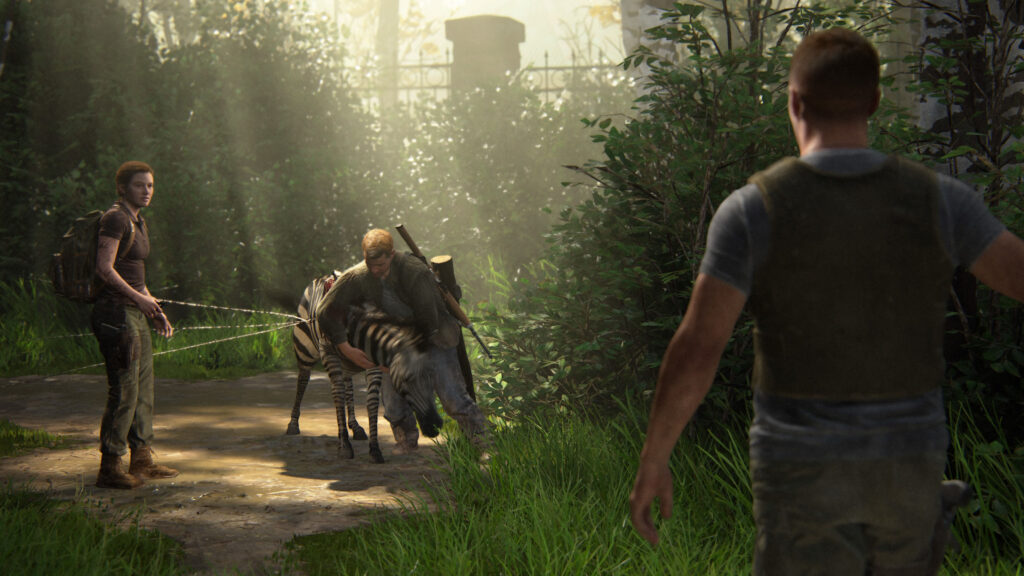
Both protagonists prove to be extremely gifted killers, who are talented survivalists. Ellie is like a crappy Naked Snake that can’t do a pull-up; small and lithe but armed with a switchblade for easy stealth kills. Both characters can hide in grass, slip through tunnels, swim, and effectively have x-ray vision.
The “hearing” is seeing through walls, and illustrates a problem with how Naughty Dog balanced their game. Apparently, there is just no way to make a stealth action game when a player is dropped in a huge area that is filled with dangerous enemies like this, and it be fair. This is false, since there are two Manhunt games that prove it can be done.
The amount of information the player gets makes it unfair to all the enemies and trivialized most encounters. Hiding in grass is far too effective to lose human threats; making stealth-kills an easy option which spends no resources. Not that resources matter much, since the post-apocalypse is like an all-you-can-eat buffet of thrifty junk.
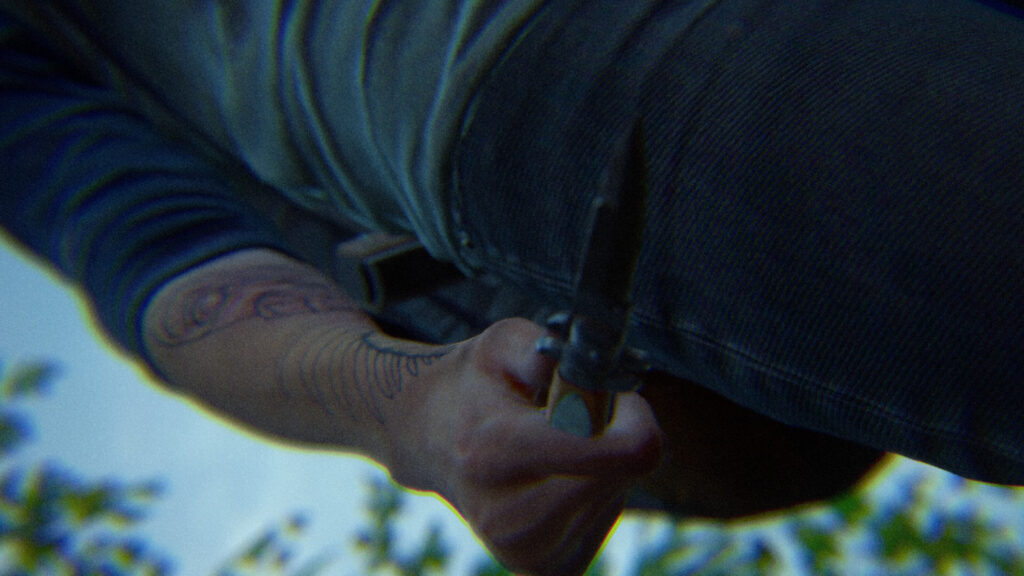
Playing as Abby is slightly different than Ellie. She acquires unique weapons, has to craft her own disposable shivs, and throws punches like Mike Tyson. Her skill tree has distinct abilities that make her lean more in the direction of direct combat, and can take more hits.
When The Last Of Us Part II cuts you loose from its sermonizing, and allows Abby or Ellie to express themselves in a manner that is more accurate than the cutscenes; it can be enjoyable. The extreme brutality that these girls are capable of makes Jason Vorhees look tame.
Since environments are so vast and intricate, there are so many options in how to kill everyone. It is easily the most satisfying part of the experience. Using an improvised explosive device that turns a guy into a pile of parts is as satisfying as one could hope. A lot of it is due to the crunchy and visceral sound design, which adds a ton of oomph to every kill.
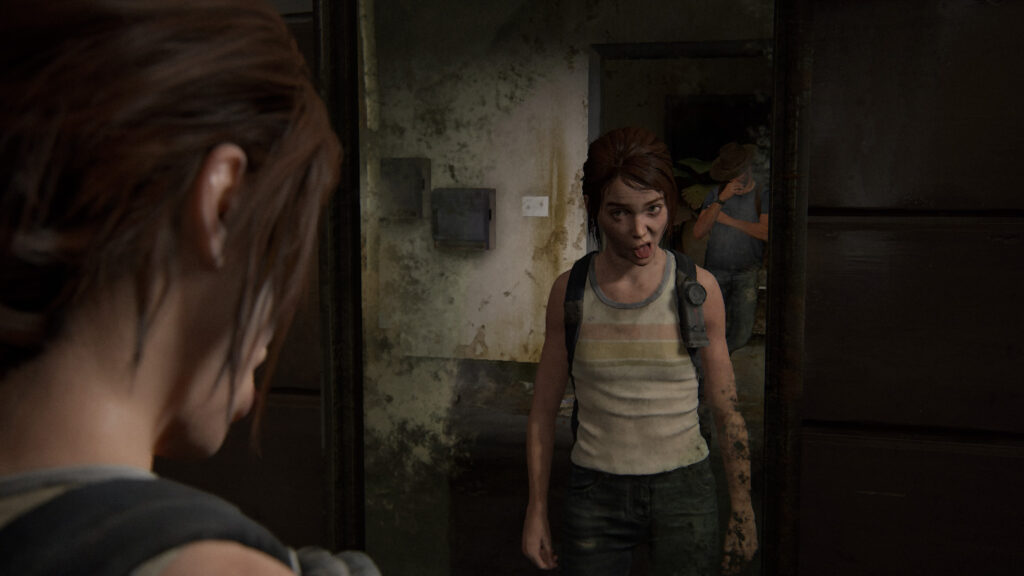
The Last Of Us Part II encourages and nurtures your inner sadist the way a loving mother beckons her child with her engorged teat. The brutal action nourishes the soul like a sweet nectar, after being famished for so long enduring long cutscenes and walking sim flashbacks. The violence is a reprieve from the writer’s pretentious diction.
New enemy types like heavies and dogs are added to the roster of human fodder. Dogs can sniff you out via Abby and Ellie’s unintentionally hilarious “stink” trail that they can also “see” when using “hearing” mode. It doesn’t make any less sense than the Clickers that are supposed to detect via echolocation, but are set off by sound any way.
The scant few new infected enemy types are ones that scatter and run away, and large armored boy that spews toxic gas. The sparse instances of encountering infected in The Last Of Us Part II are so few that it could be forgiven to think that there are no zombies in the game.
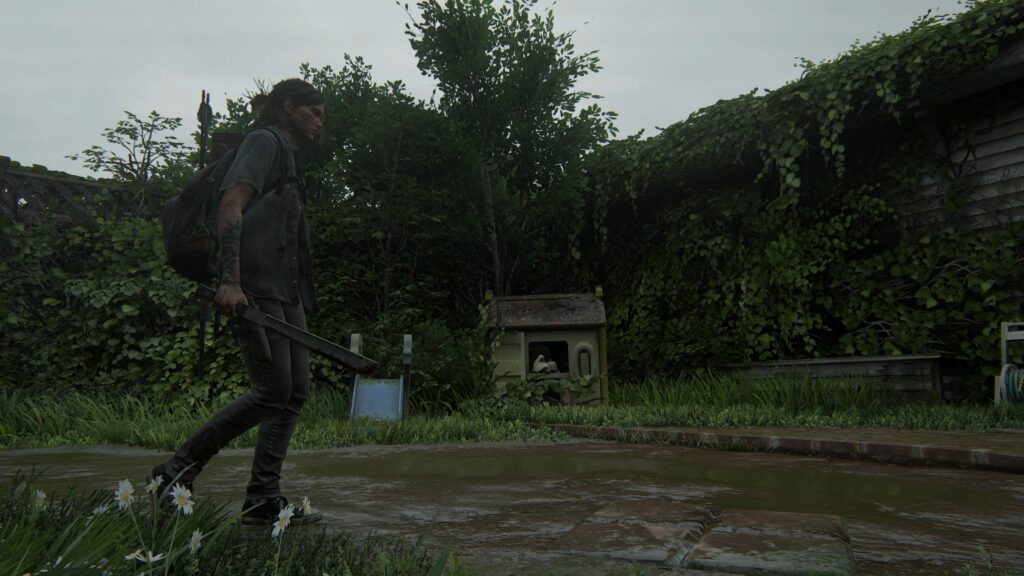
Instead of having so many flashbacks where all you do is walk around and interact with objects, there could have been more instances of human and infected encounters. These were rare but were a highlight, since it shows off how much more believable the artificial intelligence has gotten since.
Cheekily guiding a pack of roaming infected with a shattering bottle towards a few snipers is one of the fleeting moments of agency found in The Last Of Us Part II. Most encounters can be negotiated with basic stealth or guerrilla tactics, and it is encouraged to play this way since there are arbitrarily low caps on resources.
The inventory makes no sense for a game that is so focused on being a grounded and gritty horror game. The max count for all ammo and items are fixed, regardless what else you might decide you should take. This is so limiting on the gameplay, and would be such an easy adjustment for the programmers.
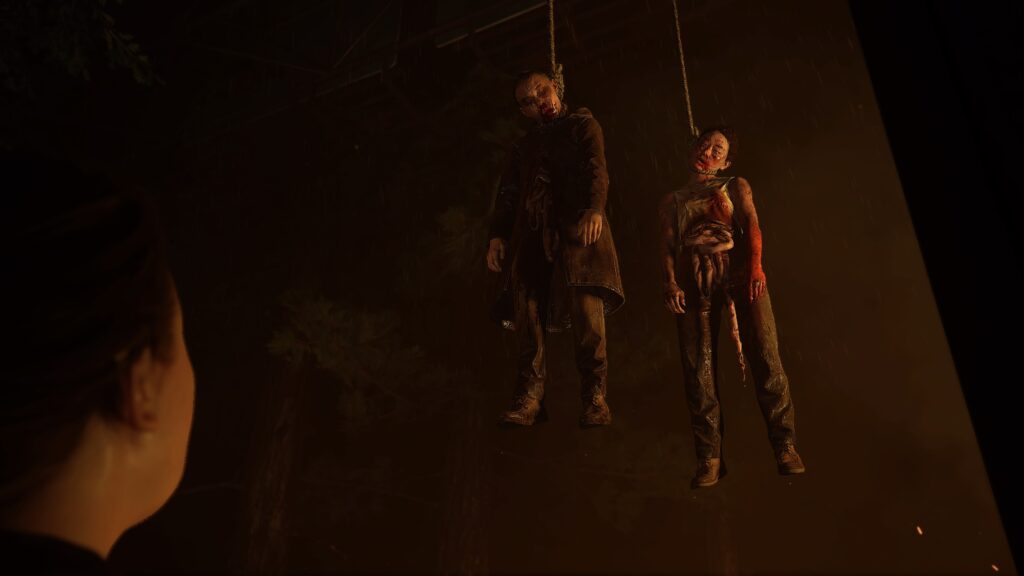
Abby won’t be able to carry more than a fixed amount of pipe bombs. If she is carrying zero pipe bombs, she still cannot pick up more bolts for her crossbow, because that amount is fixed too. This is something the original Resident Evil figured out back in 1996.
What The Last Of Us Part II should have done is put inventory management on the player to decide. This would allow people to create a play style, and to potentially let them experiment with the gameplay. Making everything completely uniform takes away what little replay value there is.
A majority of the substance is a vanilla stealth-action game, with the best visuals and polish that an unbearable crunch-time can buy. The visuals and attention to detail are off the charts, since this more focused and linear game design allows for more controlled locations, and for artists to concentrate on specific areas.
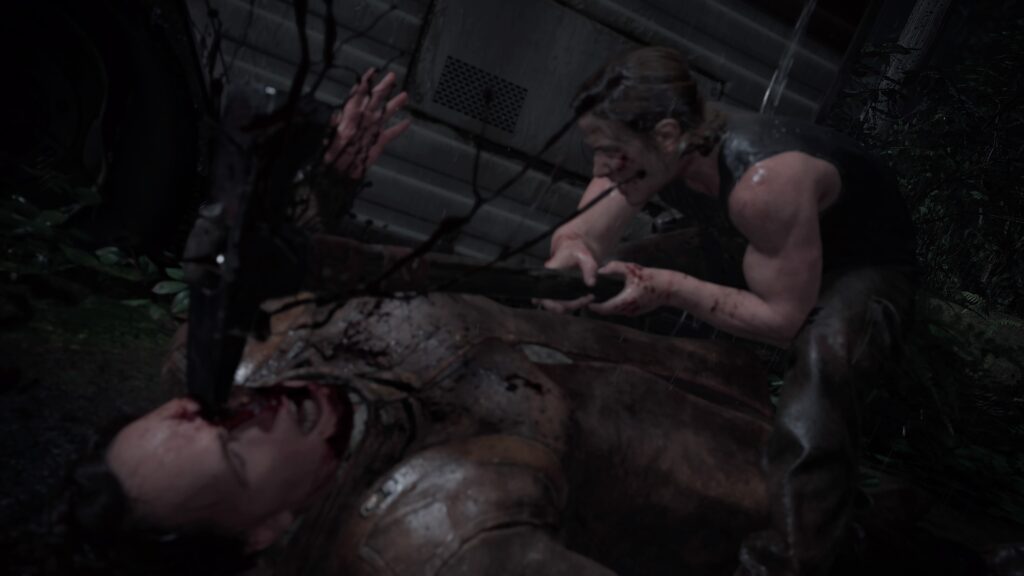
Facial details and small muscle twitches in broad poses are finely crafted during gameplay. So much of the finer aspects of what the tortured souls in the art department can be admired in the photo-mode, where its possible to get close to catch unprecedented details.
The violent kills border on snuff film, as victims’ facial expressions contort into agony as their eyes roll back and the color drains from their face. Biceps flex like they would in real life, and the distinct way light bounces off key points on anatomy makes a physically strong character truly exude power.
The world is a heap of junk that is overrun by untamed nature. The flora and how it has collision with Abby/Ellie as they move through it makes everything feel alive. Lighting is especially notable in how realistic it is, avoiding the cliche of glamorous Hollywood style painterly lighting that is seen in most AAA games.
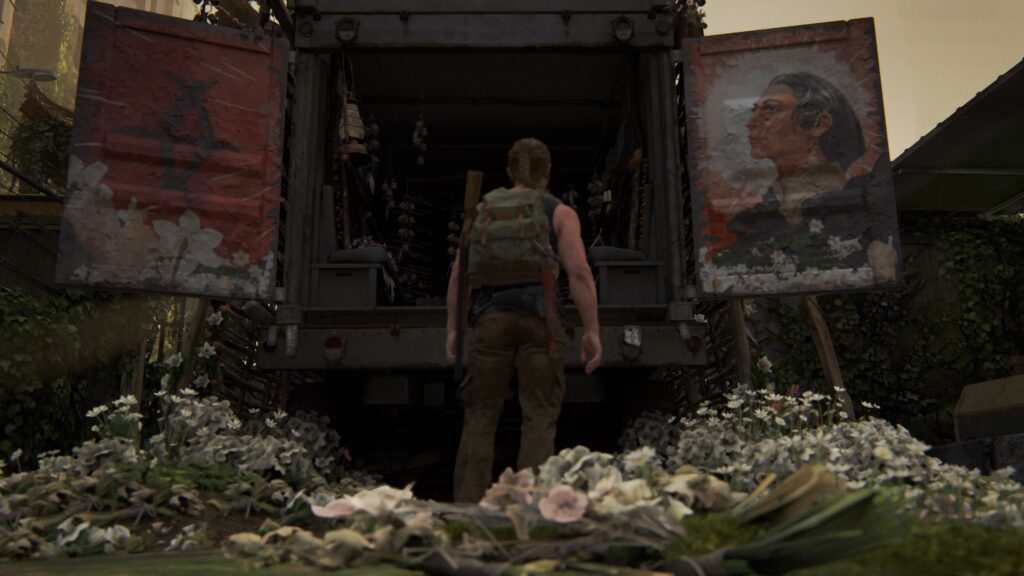
The unbelievable image quality and life-like animation is easily The Last Of Us Part II‘s greatest achievement. It looks like the game was made by people who thought their life depended on it. Stressed and pressured to produce something that won’t lead them getting blacklisted.
Of course The Last Of Us Part II is one of the best looking PlayStation 4 games. There was never any doubt it wouldn’t look stunning. If only the writer and director was put under the same scrutiny, maybe the narrative wouldn’t be a joyless and insufferable sermon.
The second best quality The Last Of Us Part II has to offer is its sumptuous sound design. The inhuman screeches and snarls of the infected can be admittedly unsettling while plundering in the dark. Greater still is the effort put into the sounds of weapons clicking, snapping and realistically rattling their individual parts.
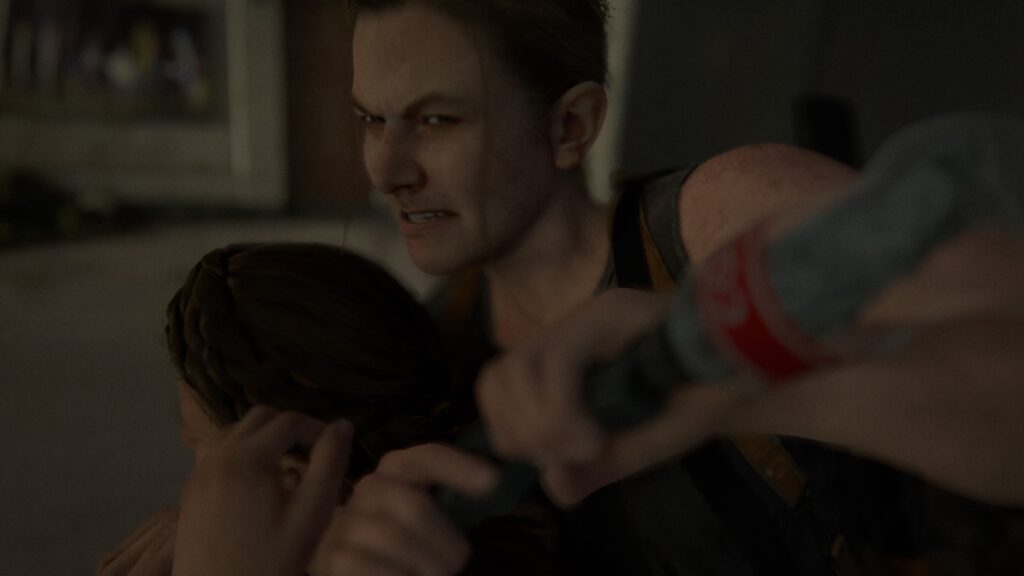
The music is appropriately restrained during most gameplay sequences and cinematics. The flavor of music mostly heard during cutscenes is a melodramatic and somber guitar riff. The guitar use is too on the nose, given the symbolic significance it has for the plot, and the director does not understand subtlety at all.
During skirmishes, there is a low and almost guttural rhythmic beat that helps drive the action. It is a very tense style that fits the gameplay: simplistic, barbaric and pragmatic. It sounds like if you were focusing so hard that you blow a blood vessel, but you don’t care and you keep concentrating.
The Last Of Us Part II has its issues with dumbed down and pedestrian game design, and insufferable characters that fill out the overbearing narrative; but its production values and polish are the best that Naughty Dog has ever produced. It is worth wondering if all of this is due to legitimate talent, or Sony’s deep pockets.
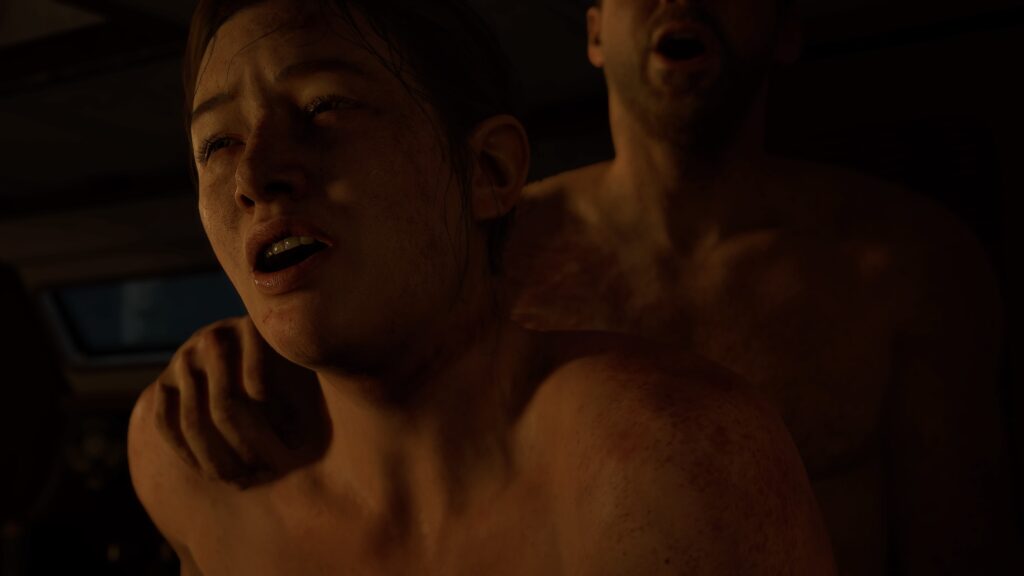
It isn’t that difficult to fix a problem by throwing money at it. The Last Of Us Part II was likely focus group tested to hell and back and despite that, it takes some gutsy moves with its narrative. Telling a story with a cast of nothing but unlikeable moppets is a bold and daring move for sure.
Story-driven games have diminishing returns, and do not hold up for repeated playthroughs. After experiencing the story and the shock value wears off, there is nothing left to enjoy about it. All you are left with is the gameplay. In a unimaginative farce, the most realistic moment is when Ellie and her girlfriend struggle to open a pickle jar.
The gameplay is functional. It isn’t grossly offensive, it just is the bare minimum to get by. It does suffer greatly from the obtrusive narrative and forced walking sequences which are far too long, frequent and unskippable. There is new game plus, but the experience just fails to hold attention after the first time.
The Last Of Us Part II was reviewed on PlayStation 4 using a personal copy. You can find additional information about Niche Gamer’s review/ethics policy here.